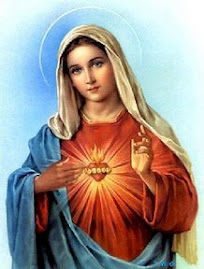 "This early feminist work is full of insights into the perception of women in nineteenth-century England. Read it for a renewed appreciation of simply having access to higher education and for a contrast to feminism of the lipstick variety."
"This early feminist work is full of insights into the perception of women in nineteenth-century England. Read it for a renewed appreciation of simply having access to higher education and for a contrast to feminism of the lipstick variety."It's actually more like 2 1/2 stars but I don't know how to make a half star so we'll just leave it at 2.
Well . . . it was decent. I thought I was going to hate it. Because this is pretty much the original feminist work so I naturally assumed it was gonna be a little crazy. But it was definitely not as bad as I expected.
The author,
Mary Wollstonecraft, made some good points especially regarding marriage and motherhood. However she also made some bad statements regarding marriage and motherhood and some other stuff. Most of her problems lie in one of three things: #1 - in combating the "subjugation" of women she swings too far in the opposite direction; #2 - she advocates certain actions which we now know, having implemented many of them, do not work in the way she predicted and often created a worse problem than the one we started with; #3 - she suffers from a flawed theology which leads to her having a flawed philosophy.

Mary Wollstonecraft was raised as an Anglican protestant but as an adult became good friends with a man named Richard Price, one of the leaders of another group of protestants, the Rational Dissenters. She began attending his chapel and was greatly influenced by the ideas of the Dissenters, later the Unitarians, including a rejection of the concept of original sin and eternal punishment. These ideas are weaved throughout her writing. (As a sidenote, the founder of modern conservatism, Edmund Burke, was not a fan of Mary's)
Another theme I found was a very puritan attitude, on the part of Miss Wollstonecraft, in her idea of love. This book being the foundation of modern feminism, I would not be surprised if this attitude has helped to form society's current detachment of love from sex. The woman seriously could've used some Theology of the Body.

The book also proves to be rather confusing because Miss Wollstonecraft uses certain words, particularly "innocence" and "virtue," in a different sense than that in which we understand them.
However, there is truth in everything, and this book does contain some very truthful quotes:
- "But what a weak barrier is truth when it stands in the way of an hypothesis!"
- "Educated in slavish dependence, and enervated by luxury and sloth, where shall we find men who will stand forth to assert the rights of man, or claim the privilege of moral beings, who should have but one road to excellence?"
- "people are never respected, though filling an important station,

who are not respectable"
- "viewing education in a false light; not considering it as the first step to form a being advancing gradually towards perfection; but only as a preparation for life"
- "for children will never be properly educated till friendship subsists between parents. Virtue flies from a house divided against itself - and a whole legion of devils take up their residence there."
 St. Aristides was a convert to Catholicism living in Athens during the reign of Emperor Hadrian. He is best known as an apologist and philosopher who composed a treatise in defense of Christianity.
St. Aristides was a convert to Catholicism living in Athens during the reign of Emperor Hadrian. He is best known as an apologist and philosopher who composed a treatise in defense of Christianity.
 Augustine was born on November 13, 354 in Tagaste, Numidia, North Africa, the son of Patricius and St. Monica. Though his mother did her best to raise the boy as a Christian, his studies in Carthage were determined to pull him in the opposite direction.
Augustine was born on November 13, 354 in Tagaste, Numidia, North Africa, the son of Patricius and St. Monica. Though his mother did her best to raise the boy as a Christian, his studies in Carthage were determined to pull him in the opposite direction. 













































 well-to-do family, the father being a naval officer and captain of the Royal Galleys.
well-to-do family, the father being a naval officer and captain of the Royal Galleys. 

